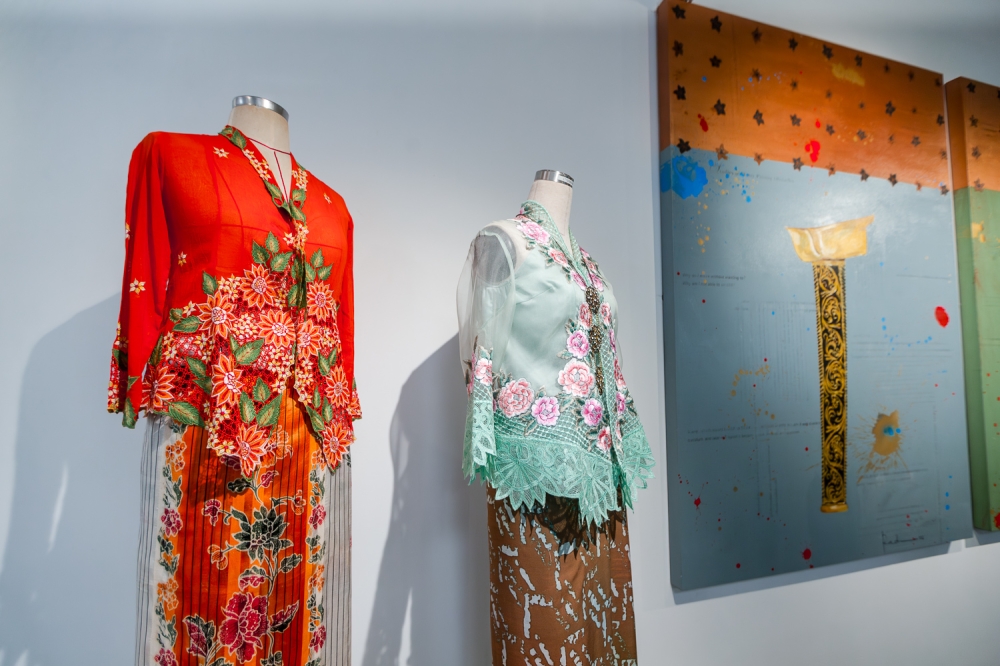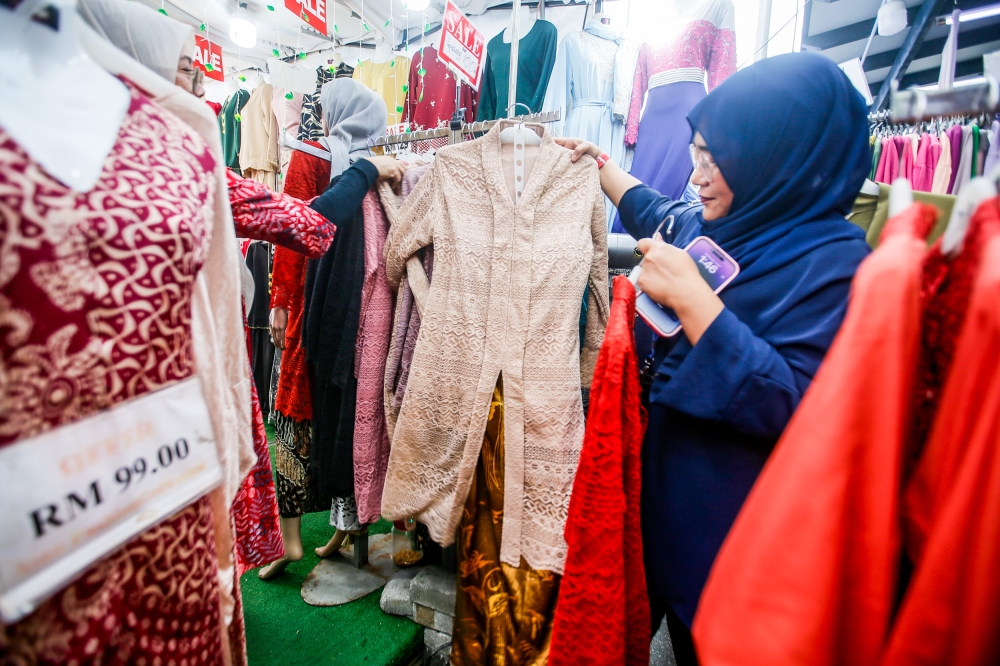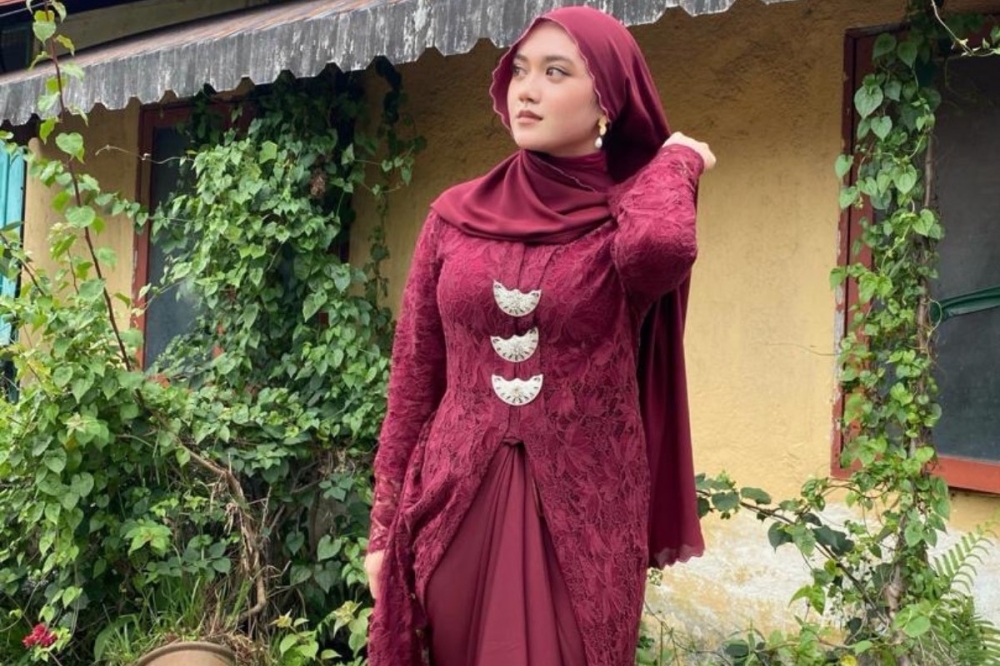KUALA LUMPUR, April 10 — As Malays head to their respective “kampung” and join in the visits to their relatives for Hari Raya Aidilfitri today, many of the women may have put on a pair of “kebaya” — a traditional dress long shared by local ethnic groups within the Nusantara region.
With Malaysia leading the region's bid to nominate kebaya as a cultural heritage, several tailors told Malay Mail that the attire is a top pick this year — along with the usual choices of “baju kurung moden” and “kebarung”, which is a hybrid of the two.
“I noticed that there were many kebaya with embroidery just like in the old times that are now being sold in the market.
“Just like the old times, they requested kebaya with slip-up sewing patterns and embroidery,” Norazlina Muhammad, a tailor at the Medan Mara here, a traditional epicentre for traditional clothings.
The 41-year-old shared that she had started taking reservations for this year’s Aidilfitri from as early as October last year.
Her sentiment was shared by tailor Mimi Azura Omar Othman, 48, who also said that she received many kebaya orders — and due to its intricacies, could reach up to double the price of a pair of baju kurung.
“For a baju kurung, I only charged RM80 and RM110 for modern baju kurung. However, for a kebaya, we will charge RM150 per pair,” she told Malay Mail.

Realising that the fasting month of Ramadan this year coincides with the start of the school year, Mimi Azura said she offered a three-payment instalment plan for parents who may find their budget a bit tight,
“Of course, personalised tailorings are more expensive than buying ready-made clothes. For example, the modern kurung, we can get it for RM50 a pair, but if tailored, the price is higher.
“Most of my customers preferred that payment method. From one pair, they will add another pair,” she added, referring to the instalment plan.
Similarly, Che Nik Ibrahim, 64, said that kebaya and modern kurung were the most ordered designs this year, receiving almost 30 pairs of order.
“I received a mix between long kebaya and short kebaya, but I don’t accept any orders for embroidery.
“For the rates, I charged around RM45 to RM50 per pair,” said the Dungun, Terengganu-based tailor.

Importing and recycling shared heritage
In April last year, the Ministry of Tourism, Arts and Culture said it would lead an initiative to nominate “Kebaya: Knowledge, Skills, Traditions and Practices” under the United Nations Educational, Scientific and Cultural Organisation’s (Unesco) Representative List of the Intangible Cultural Heritage of Humanity along with Brunei, Indonesia, Singapore and Thailand.
With a long history since the beginning of the 20th century, the kebaya has its roots in various communities in the region such as the Peranakan, Javanese and Malay — leading to various differing designs and tailoring methods.
This variety and a resurgence of appreciation for the attire have led to Malay women trying out other designs, such as Syaidatul Salmah Saiful, 25, who went to Indonesia earlier this year to find ways to stand out this year.
“If we want a different design from others, then why not we ‘import’ the design? Plus, if we went to foreign country, then we could also buy something related to that country. For example, we go to Indonesia and buy their local batik,” she related.
Despite that, Syaidatul conceded that Malaysians now have a wider choice of traditional wear, with variety in design and sizes.
For Nurul Atikah Sarji, 25, the price and the design of kebaya in Indonesia eventually pulled her to plan a trip to Bali, Indonesia.
“Recently, I went to Bali for a holiday and at the same time, I bought a kebaya for only RM85, which I could get the exact design in Malaysia from about RM300 for the same design.
“Plus, the quality of the kebaya that I purchased in Bali is absolutely worth the price and they also have neat sewing,” she said.
“I can buy three pairs at that price in Indonesia,” she said, comparing the prices between the two markets.

Corporate worker Putri Nurul Syafiqah Kamarazaman, 27, said she has had to prepare many traditional attires due to several events happening this year such as wedding ceremonies for family and friends.
This has led her to forego tailoring new pairs and instead merely recycling old pairs.
“However, even if I don’t have any weddings to attend, I still think I would recycle last year’s baju raya as they are still in very good condition and I don’t wear them that often.
“I like classic styles so most of the designs that I have are the classic oversized kebarung and laced kebaya. I do have a few pairs of Shantung silk kurung that are still in good condition which I can still wear despite it being from 2019,” she told Malay Mail.
With rising costs of living leading many Malaysians to stay frugal, Siti Fatimah Mesran also shared her plans to wear her previous baju kurung for this year’s Hari Raya since she was scheduled to work during the celebration day anyway.
“I have mostly warm colours with kebaya, modern kurung and traditional kurung in my wardrobe.
“By recycling, I could save up. Plus, the design for baju kurung is almost the same every year. As long as it can be worn, then it should be okay,” she said.
Read these articles from Malay Mail's series on the kebaya last year to know more about the traditional attire:
- Loved and worn by the Nyonya in South-east Asia, here’s a look at the history and evolution of the kebaya
- Amid Unesco cultural heritage bid, Malaysian experts worry about dying art of ‘kebaya’ embroidery
- After more than 100 years, Penang’s vibrant Nyonya ‘kebaya’ continues to draw visitors from far and wide






















